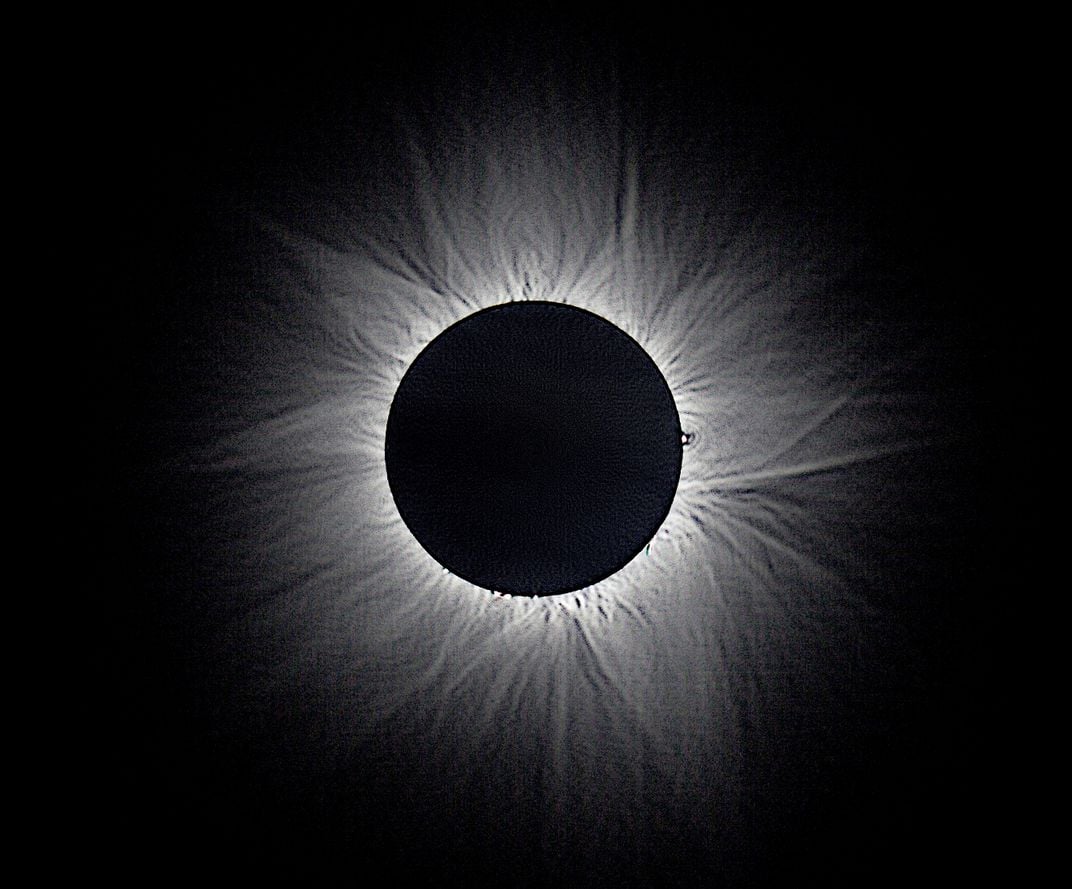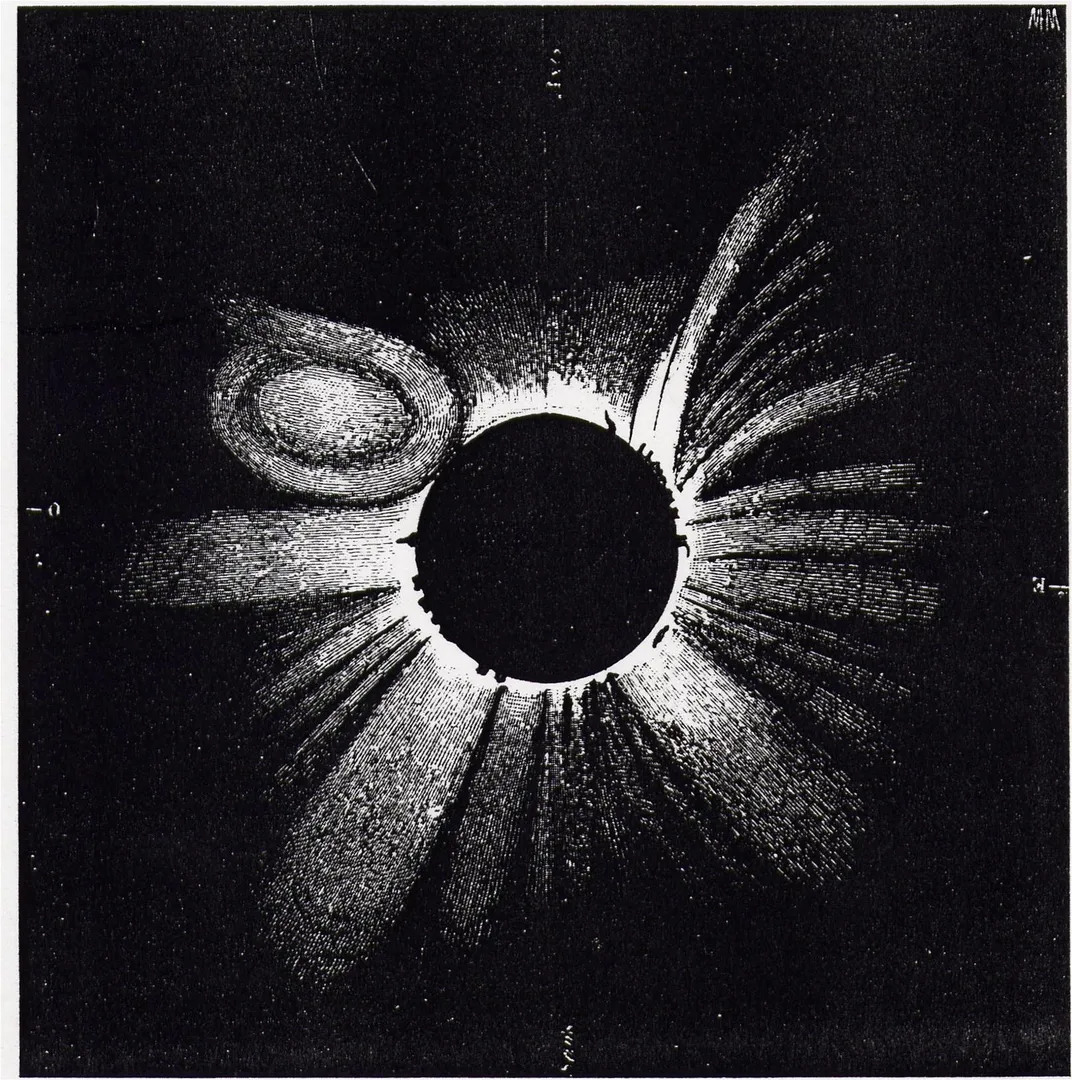This New Mexico Petroglyph Might Reveal an Ancient Solar Eclipse
In 1097, a Pueblo artist may have etched a rare celestial event into the rock for all of posterity
/https://tf-cmsv2-smithsonianmag-media.s3.amazonaws.com/filer/ab/4f/ab4f3acf-73be-4f00-9056-ace7d28dc727/chaco_canyon_eclipse_petroglyph.jpg)
In 1992, archaeoastronomer Kim Malville was helping lead an expedition of archaeology students in the Chaco Canyon area of New Mexico, once a metropolis of Pueblo society replete with intricately built stone houses. One of his students noticed something unusual carved into the surface of the rock. "It was covered in a number of petroglyphs," Malville recalls, "one of which was this very strange circular dot with hairs coming out the edge of it. People thought it was a bug or a tick."
"I joked that only a solar astronomer could find that beautiful," says Malville, who is now retired. What made that petroglyph, or rock drawing, so beautiful to Malville was its striking resemblance to a phenomenon he had grown quite familiar with in his work as a solar astronomer before he turned to archaeology: a coronal mass ejection.
The Sun's corona is the super-hot aura of plasma that surrounds our star like a crown or halo. This charged layer of gas extends thousands of miles into space above the Sun’s surface. A coronal mass ejection is essentially what it sounds like: a large ejection of plasma from the Sun's corona into space, usually caused by a solar flare or other outburst from the Sun's surface. This plasma is vaulted away from the Sun in an arc that appears to rise up and snap, launching charged gas at speeds of hundreds of miles per second.
The Sun’s corona is bright, but far dimmer than the surface of the star, meaning it's usually invisible to the naked eye. However, there is one time when the corona becomes starkly visible. When the Sun's light is blocked by the Moon moving in front it during a solar eclipse, it becomes possible to see the corona is brightly snaking out from the edges of the shadow where the Sun once shone. During a solar eclipse, it is also be possible to see the tendrils of a coronal mass ejection, silhouetted against the sky.
To Malville, the petroglyph etched into the side of Piedra del Sol was almost certainly a depiction of such a striking celestial event by a Pueblo artist. "This pictrograph is unique," Malville says. "There's no other kind of rock art object that I know of that has this shape to it."

In a study published in 2014 in the journal Mediterranean Archaeology and Archaeometry, he set out to prove a connection between what he saw in the rock carving and what the heavens were doing at the time. If the petroglyph did indeed depict an eclipse, he thought, it could shed light on the special relationship that existed between the Pueblo people and the Sun.
Based on calculations of the orbits of the Moon and Earth, Malville notes that a total solar eclipse was visible in the Chaco Canyon area on July 11, 1097, around the height of the area's development. However, this alone didn't prove that the drawing on the petroglyph actually showed a coronal mass ejection. That’s because the chance of both a solar eclipse and a coronal ejection occurring in tandem are slight.
"We can list on one hand the number of times a coronal mass ejection has been observed during an eclipse," Malville says, noting that the most recent occurrence happened in 2012.
One of the few previous observed occurrences was in 1860, when a Spanish astronomer managed to sketch out a coronal mass ejection during a solar eclipse. That drawing that strongly resembles the Piedra del Sol petroglyph.

To prove his hypothesis, Malville collaborated with astrophysicist José Vaquero, who specializes in reconstructing the solar activity of the past using evidence left behind on the Earth. Unlikely as it sounds, one of the clues Vaquero uses is trees.
When the Sun's rays strike atoms in Earth's atmosphere, they can create radioactive molecules called radionuclides, including the radiocarbon used in dating organic material. Those radioactive molecules get bound up in living matter, like trees. By analyzing how much radiocarbon is left in samples of tree rings dating back to a certain year, scientists can extrapolate how much energy the Sun was shooting toward Earth's atmosphere at that time. A more active Sun is much more likely to be shooting off coronal mass ejections regularly.
Vaquero's analysis found that the Sun reached a maximum of activity in its cycle of magnetic activity in the year 1098—just one year before the Chaco Canyon eclipse. This means that the Pueblo people that year saw a Sun in a state of "great unrest" being blocked out by the Moon, Malville says, making a coronal mass ejection during the eclipse a strong possibility.
There is a common belief in modern times that before the advent of modern science and astronomy, eclipses were considered an ominous event and viewed with terror. Malville strongly disagrees with this trope. He points to the Piedra del Sol petroglyph as evidence that this event wasn't feared but rather revered as an example of the “power and sacredness of the Sun.” After all, he says, it appears that an artist took the time to sketch it as it happened instead of cowering in fear and later painstakingly carved into a sacred rock in the community.
"It looks like it was done sort of lovingly," Malville says. "I think it was celebratory, and I think that's pretty common with most eclipses in the past."